The Mario Blog
TAKEAWAY: A marvelously curated Fellini: The Exhibit at the relatively new EYE film museum in Amsterdam is a reminder of what a master the Italian movie director was. In addition, this exhibit offers glimpses of Fellini the artist: sketching ideas and dreams, and photographing people and places that would be part of his movies.
TAKEAWAY: A marvelously curated Fellini: The Exhibit at the relatively new EYE film museum in Amsterdam is a reminder of what a master the Italian movie director was. In addition, this exhibit offers glimpses of Fellini the artist: sketching ideas and dreams, and photographing people and places that would be part of his movies.
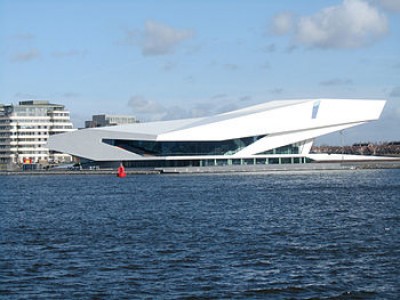
The Eye Museum in Amsterdam: devoted entirely to the world of cinema
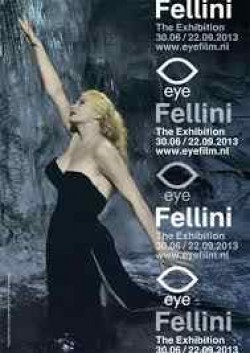
Fellini: The Exhibit poster
Before paparazzi existed as a consolidated entity whose members get occasionally punched on the face by those whom they pursue, or who may even be blamed for tragic accidents that result in the death of royalty, there was Federico Fellini and his movies.
It was one of those films, La Dolce Vita (1960), that included a character named Paparazzo, a news photographer, of course. Fellini, always clever and grabbing for symbols, is said to have named this character after the word “paparazzi”, which comes from an Italian dialect and means annoying noise, as in a buzzing mosquito. One of the exhibit’s segments about the paparazzi explains that Rome during the 1950s was referred to as Hollywood-on-Tiber. Italy attracted American productions because of low costs. The studio Cinecittá was abuzz with activity, including Hollywood stars. Cinecittá was a sort of “fortress”, however, and only a select few accredited photographers were allowed to follow the filming. As a result, photographers would lurk around everywhere in the city waiting to catch a glimpse of a famous star in the arms of another famous star, or, better yet, get “the whiff of a possible scandal”. The paparazzi were born, and they are here to stay, and with the same intentions.
While Federico Fellini movie lovers will absolutely enjoy this retrospective of his movies and career at the EYE Museum, I was captivated by the many examples of newspapers, magazines and posters depicting an era, and showing us that, in terms of design, there was much exciting happening.
Fellini: the visual storyteller “doodling tits and bums”
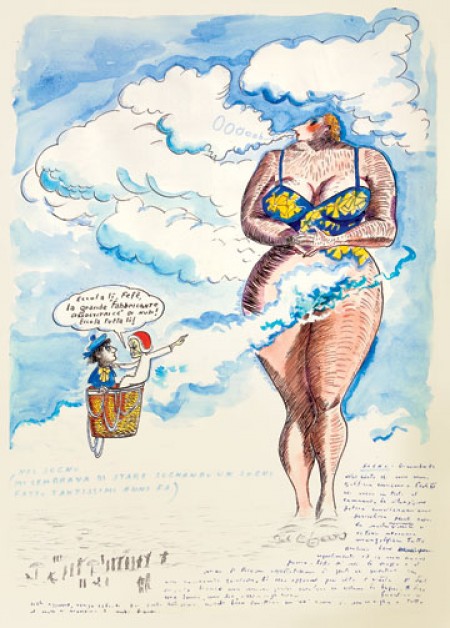
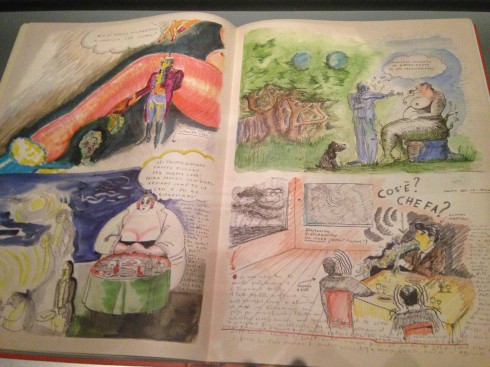
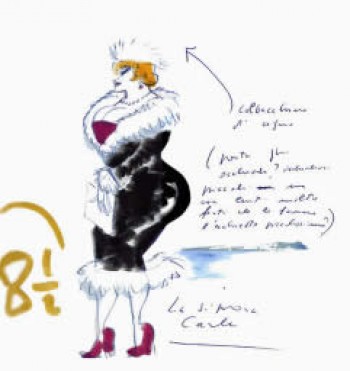
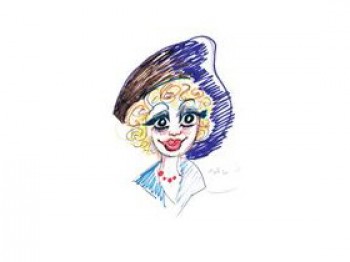
As I walked through the exhibit, I kept thinking that Fellini would fit perfectly well in our world of visual storytelling today, across platforms.
Fellini was a cartoonist before he was a filmmaker, and even in his later years, he was creating “photo novels”, basically stories told through comic strips. There was a film that he was always talking about, but never got to make, and a friend convinced him to do it as a photo-novel, complete with illustrations, which he did.
Here is what he said about sketching prior to the start of one of his movies:
When starting my films, I spend most of my time sitting at my desk, doodling tits and bums. It is my way of beginning my film, of deciphering it through these doodles….Later, these sketches and my notes end up in the hands of my collaborators: the set designer, the costume designer and the make up artist, and all of them use it to get their work going.
Fellini had a particular interest in drawing midgets and prostitutes. Of the latter he said: “There are two important women in the life of every Italian man: his mother and the prostitute. The mother nurtures him from the start, the prostitute, at least for members of my generation, initiated us into sex.”
The dreams: In the 1960s, Fellini started seeing a Junghian psychoanalyst who advised him to record his dreams. Between 1960 and 1990, Fellini filled two big ledgers with his annotations. Each morning almost until he died, Fellini would sketch his dream of the night before. The sketches are assembled in The Book of Dreams.
Newspapers and the birth of the paparazzi
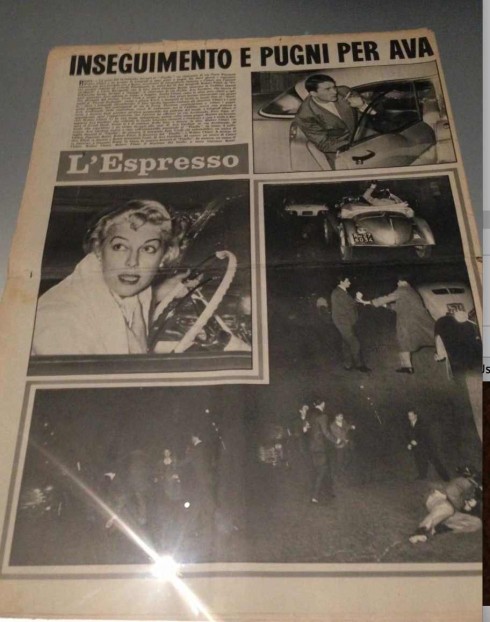

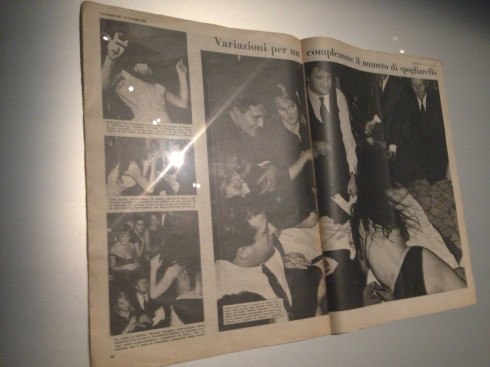
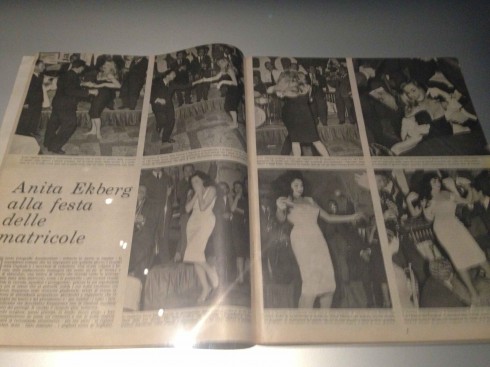
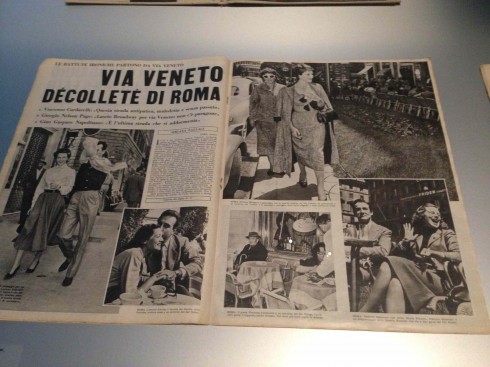
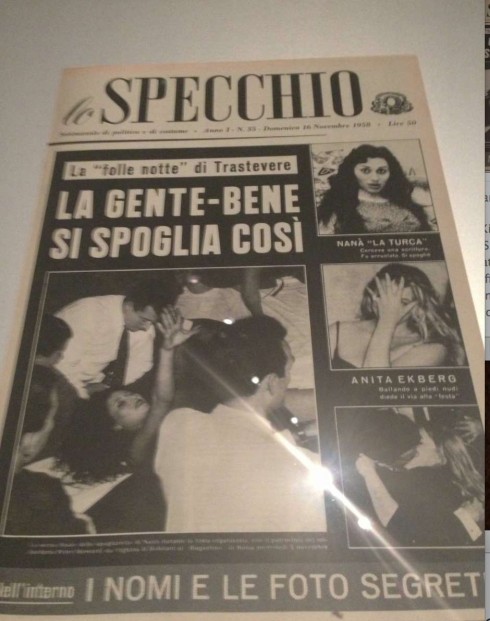
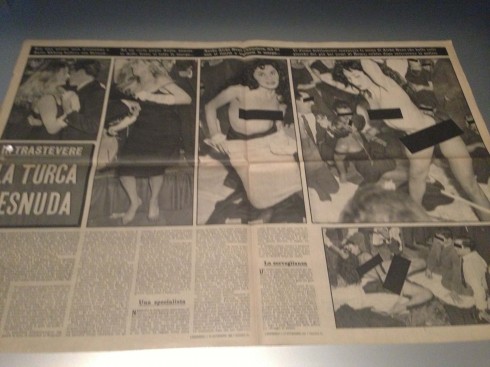
Newspapers covering Fellini, his movies, his stars: notice the photo dominance
The newspapers, all in black and white, devoted double pages to photo essays, the precursor of today’s photo galleries. Headlines were big, texts not so long, but the photos of the stars, big and full of impact. Somehow, one does not miss the color element in these pages. Photos were well selected, and some art directors even had obviously a lot of fun working with type.
Those fan magazines not too far from today’s

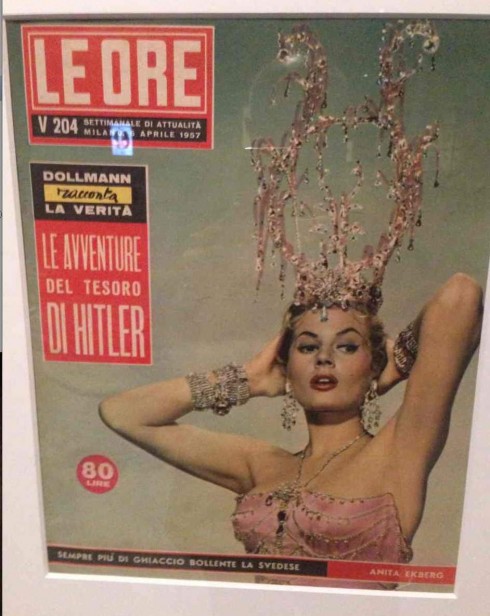

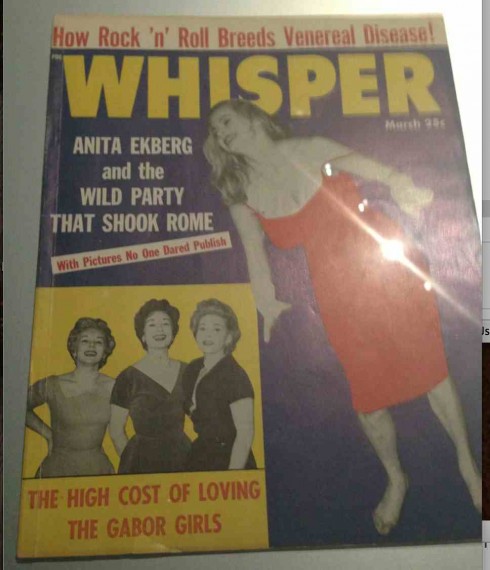
Fan magazines and Fellini’s stars had a distinct and long love affair. One of Fellini’s most revered stars, the Swedish actressAnita Ekberg, blonde and voluptuous, was the definitive cover girl of her times, although her frequent male costar Marcello Mastroiannialso commanded plenty of attention.
The posters
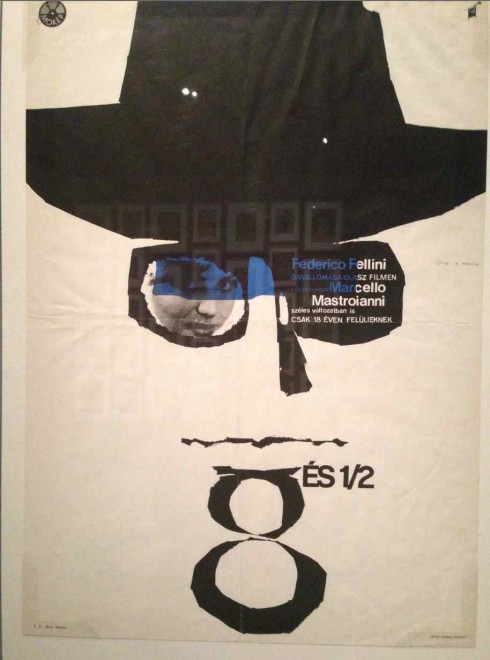
This is one of my favorite posters in the exhibit, for the Fellini film 8 1/2 (1960) designed by Ferenc Bors. This film, one of my favorites (after La Dolce Vita), is quite autobiographical: the story of a director struggling for inspiration. I found it interesting that the exhibit places this film under the Fellini Superstar segment, an allusion to how Fellini, in his later years, attempted to theatricalize his own image
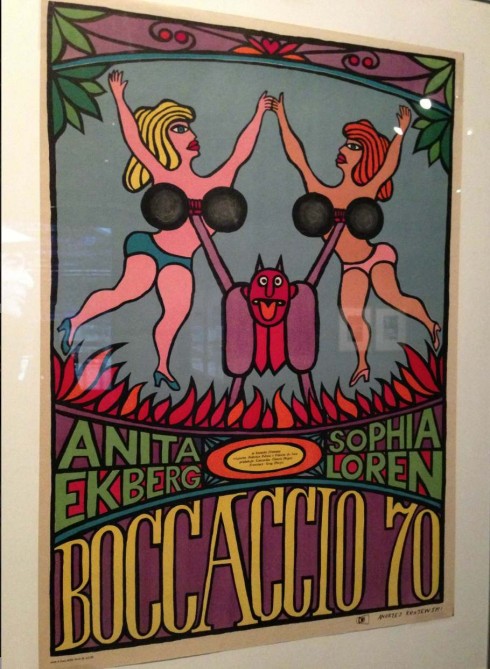
This 1966 poster for Boccaccio 70 is Fellinesque in its cartoony approach to how it depicts the film’s two voluptuous stars: Sophia Loren and Anita Ekberg. Graphic designer Andresz Krojewski
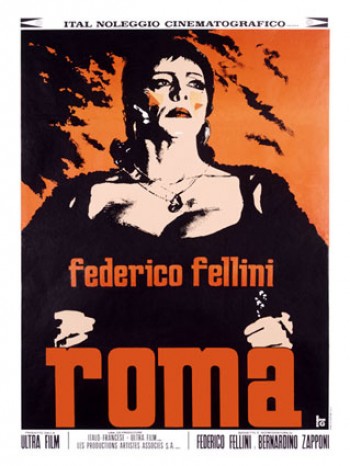
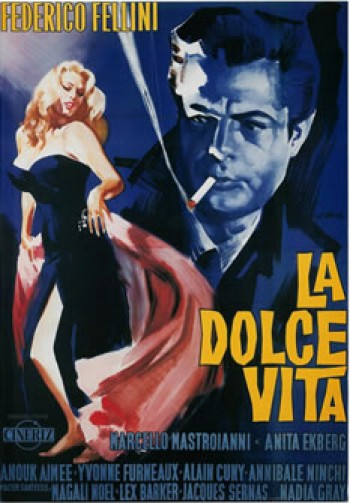
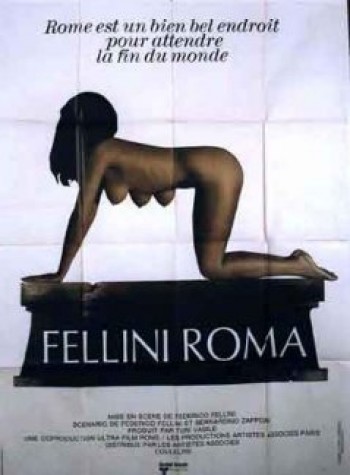
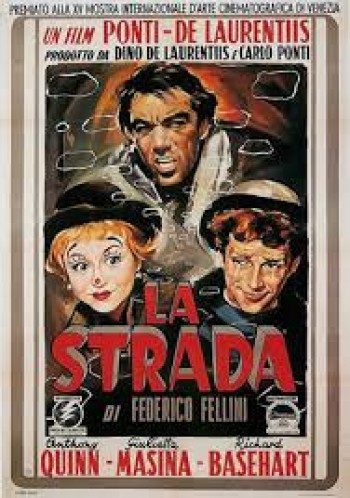
More about the EYE museum and the Fellini exhibit:
http://www.eyefilm.nl/en
Read us on that fence
I just happened to walk into perhaps the great next best marketing idea for selling newspapers. Yes, the Netherlands’ daily, NRC, has its pages wrapped around the fences of a construction site. Take a look at this video clip: you can actually read stories here. Memorable.
NO, they are not changing the pages daily (that I know of), but it is still one fantastic way to get the printed newspaper brand out there. It beats looking at an ugly fence.